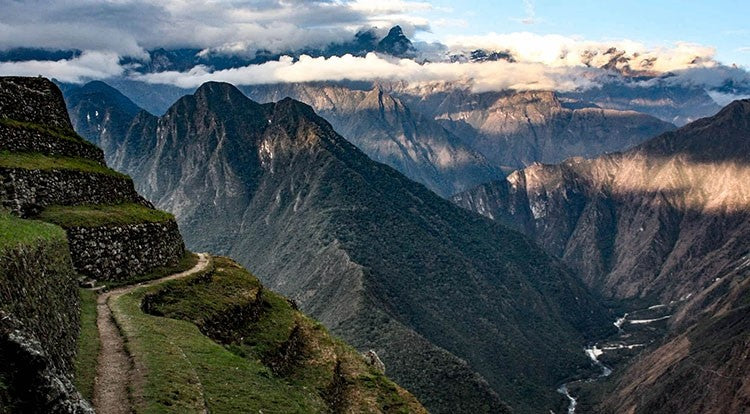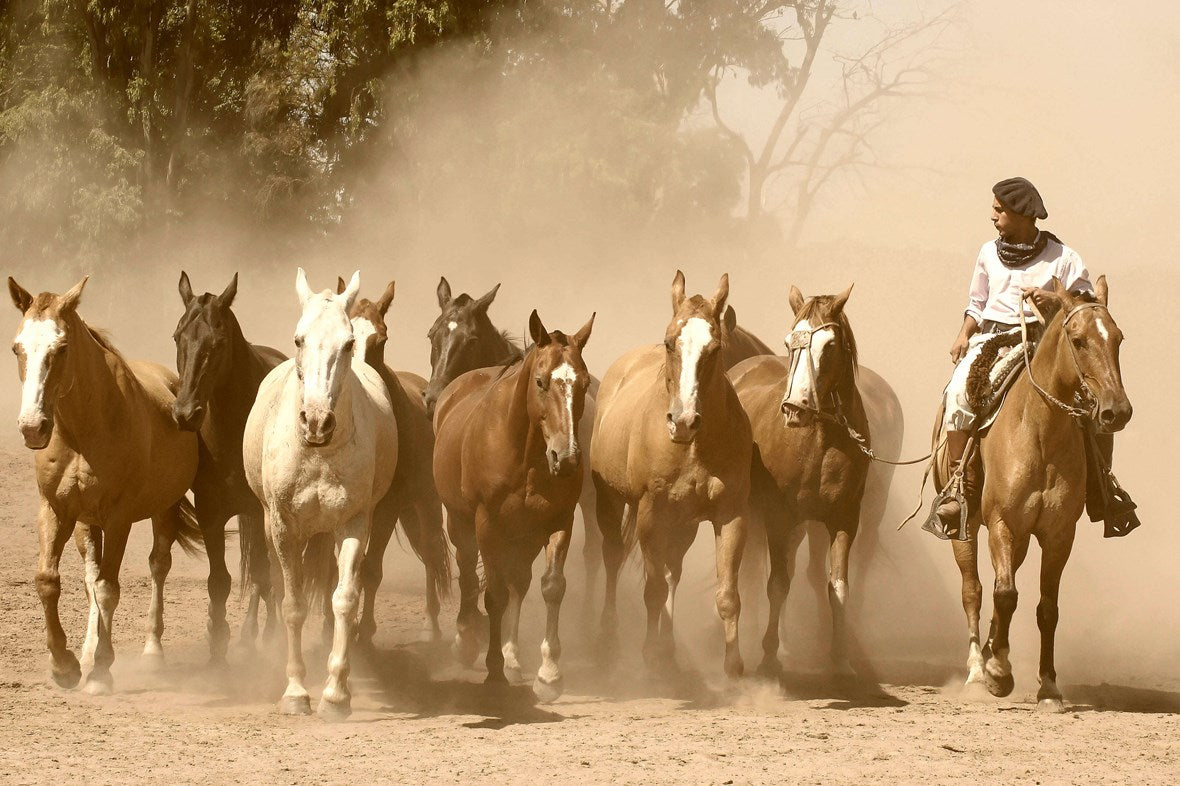7155457163455,
7154597036223,
7154605981887,
7154592383167,
7154388926655,
7154581274815,
7154602901695,
7630784594111,
7590593036479,
7630787608767,
7154587402431,
7358439915711,
7612759277759,
7154571968703,
7154604343487,
7630788755647,
7155457032383,
7154410160319,
7154574557375,
7154593956031,
7154570395839,
7154608636095,
7154585272511,
7590648774847,
7358414553279,
7154598576319,
7358420877503,
7590669123775,
7154612109503,
7154589761727,
7219522961599,
7154377785535,
7154579931327,
7154600411327,
7154485199039,
7397394546879,
7154487656639,
7154489426111,
7154601689279,
7449571164351,
7219522601151,
7154618859711,
7154619908287,
7154621808831,
7593068888255,
7660781928639,
7691518214335,
7154392072383,
7154393448639,
7154394923199,
7154397544639,
7154398986431,
7154396233919,
7154400428223,
7154402066623,
7154403639487,
7397394546879,
7154597036223,
7155457163455,
7154605981887,
7154511642815,
7154518753471,
7166013767871,
7154525601983,
7154592383167,
7166051975359,
7154571968703,
7154502041791,
7154602901695,
7154497257663,
7154581274815,
7154499977407,
7154495357119,
7154574557375,
7154471698623,
7154434900159,
7154422841535,
7154593956031,
7154598576319,
7154587402431,
7155457032383,
7166057742527,
7154487656639,
7154612109503,
7154585272511,
7154523209919,
7154412814527,
7154464522431,
7155456999615,
7154388926655,
7154410160319,
7154474746047,
7154570395839,
7154532679871,
7219522961599,
7154604343487,
7154600411327,
7154404982975,
7155456966847,
7219522601151,
7154531434687,
7154543067327,
7154416058559,
7154608636095,
7154579931327,
7358439915711,
7154533957823,
7154547163327,
7154382766271,
7154416058559,
7154412814527,
7154422841535,
7527616610495,
7154404982975,
7154543067327,
7154544574655,
7154541592767,
7399394607295,
7396710252735,
7399378190527,
7154546639039,
7154547163327,
7154471698623,
7540275740863,
7588226072767,
7590643171519,
7590717915327,
7590604046527,
7590753632447,
7590648774847,
7590593036479,
7590756024511,
7591444414655,
7591449788607,
7612759277759,
7154416058559,
7610441760959,
7154382766271,
7154546081983,
7665036558527,
7665042653375,
7665049796799,
7665058119871,
7666658508991,
7590593036479,
7590669123775,
7588226072767,
7396710252735,
7590648774847,
7590604046527,
7399378190527,
7399394607295,
7590643171519,
7590756024511,
7590753632447,
7591444414655,
7591449788607,
7612759277759,
7665036558527,
7665042653375,
7665049796799,
7665058119871,
7666658508991,
7219522601151,
7154601689279,
7358420877503,
7154416058559,
7154471698623,
7540275740863,
7610441760959,
7590717915327,
7253155250367,
7193303220415,
7154546639039,
7154547163327,
7154382766271,
7154546081983,
7665042653375,
7595046994111,
7595046961343,
7595046928575,
7665049796799,
7595046273215,
7595046502591,
7595046568127,
7611869593791,
7664100540607,
7664100376767,
7664147136703,
7154597036223,
7154605981887,
7154525601983,
7154518753471,
7154511642815,
7154592383167,
7154602901695,
7154571968703,
7154581274815,
7154434900159,
7154502041791,
7154497257663,
7154499977407,
7154574557375,
7154593956031,
7154495357119,
7154587402431,
7154471698623,
7154585272511,
7154598576319,
7154612109503,
7219522601151,
7154410160319,
7154487656639,
7154523209919,
7154464522431,
7154570395839,
7154474746047,
7358414553279,
7154604343487,
7358439915711,
7154579931327,
7154532679871,
7154533957823,
7154608636095,
7154600411327,
7219522961599,
7154461278399,
7154458230975,
7358426480831,
7154531434687,
7154489426111,
7358420877503,
7358418485439,
7367917994175,
7154589761727,
7154485199039,
7367887913151,
7154529927359,
7154528420031,
7155457163455,
7166013767871,
7166051975359,
7155456999615,
7155457032383,
7154388926655,
7166057742527,
7155456966847,
7154388566207,
7166023139519,
7166032806079,
7166027169983,
7166039228607,
7166045061311,
7166063116479,
7399394607295,
7166088708287,
7396710252735,
7593068888255,
7590648774847,
7590593036479,
7591449788607,
7590669123775,
7591444414655,
7166094639295,
7590604046527,
7590753632447,
7399378190527,
7166083465407,
7590756024511,
7588211654847,
7166087725247,
7590643171519,
7588226072767,
7166079598783,
7166065180863,
7666658508991,
7665058119871,
7665049796799,
7665042653375,
7665036558527,
7612759277759,
7588222271679,
7166084841663,
7158971400383,
7154458230975,
7154461278399,
7394534523071,
7159048929471,
7393416937663,
7394551005375,
7393415430335,
7154624921791,
7394564145343,
7193303220415,
7394561130687,
7253155250367,
7394557526207,
7393415332031,
7393416511679,
7394565652671,
7540275740863,
7154601689279,
7154579931327,
7154589761727,
7154604343487,
7154541592767,
7154543067327,
7154544574655,
7154525601983,
7154533957823,
7358428807359,
7358428020927,
7358426480831,
7358425792703,
7433236021439,
7369423257791,
7433281437887,
7433281536191,
7433279570111,
7433281601727,
7433281634495,
7433281765567,
7433280979135,
7433281863871,
7433281208511,
7593068888255,
7154464522431,
7154471698623,
7154474746047,
7367866253503,
7367866417343,
7367883587775,
7154430345407,
7154431623359,
7154432377023,
7154433392831,
7154434900159,
7325359440063,
7154548900031,
7154548506815,
7154548015295,
7154562597055,
7367919337663,
7367907475647,
7367917994175,
7367920156863,
7367921369279,
7658931585215,
7166045061311,
7154541592767,
7154543067327,
7154544574655,
7154382340287,
7399394607295,
7154511642815,
7644398551231,
7652397809855,
7660816793791,
7644391768255,
7644391964863,
7644400353471,
7652398366911,
7652398235839,
7154376671423,
7154380636351,
7154422350015,
7166039228607,
7154532679871,
7154404982975,
7154422841535,
7367886241983,
7367889649855,
7367895089343,
7367897612479,
7367898792127,
7393557512383,
7393557577919,
7527616610495,
7367887913151,
7154571968703,
7154581274815,
7154574557375,
7590643171519,
7441174298815,
7441181507775,
7441175249087,
7154602901695,
7154604343487,
7154386075839,
7154386665663,
7154387288255,
7154585272511,
7154593956031,
7154624921791,
7394565652671,
7394564145343,
7630784594111,
7154587402431,
7154597036223,
7154562597055,
7595048140991,
7595048108223,
7595048173759,
7154377785535,
7154579931327,
7630788755647,
7397394546879,
7595046961343,
7595046994111,
7595046928575,
7393415332031,
7393415430335,
7393416511679,
7154570395839,
7595050500287,
7595050467519,
7595050533055,
7358439915711,
7219522961599,
7630787608767,
7154601689279,
7358420877503,
7367917994175,
7367907475647,
7367919337663,
7154608636095,
7154612109503,
7154618859711,
7154410160319,
7154592383167,
7154574557375,
7358439915711,
7367895089343,
7367898792127,
7367886241983,
7154593956031,
7154579931327,
7154597036223,
7394557526207,
7394561130687,
7159048929471,
7590756024511,
7154571968703,
7219522961599,
7154410160319,
7394534523071,
7394551005375,
7393416937663,
7154598576319,
7154587402431,
7154562597055,
7595046502591,
7595046273215,
7595046568127,
7154377785535,
7630787608767,
7630784594111,
7358420877503,
7397394546879,
7595046961343,
7595046994111,
7595046928575,
7154570395839,
7154608636095,
7154612109503,
7154601689279,
7584240369855,
7584243089599,
7253155250367,
7193303220415,
7611869593791,
7154600411327,
7154602901695,
7449571164351,
7367921369279,
7154489426111,
7154487656639,
7154485199039,
7393529299135,
7155457163455,
7154388926655,
7590593036479,
7612759277759,
7166013767871,
7155457032383,
7166032806079,
7166023139519,
7590669123775,
7166027169983,
7155456999615,
7166051975359,
7155456966847,
7590648774847,
7396710252735,
7588226072767,
7166094639295,
7166083465407,
7166084841663,
7166065180863,
7590643171519,
7158971400383,
7590753632447,
7166087725247,
7166088708287,
7591449788607,
7590604046527,
7593068888255,
7399378190527,
7399394607295,
7166063116479,
7166039228607,
7154377785535,
7397392744639,
7397394546879,
7154562597055,
7584243089599,
7584240369855,
7633735286975,
7633735090367,
7633735319743,
7633735352511,
7154388566207,
7166057742527,
7154550997183,
7154552668351,
7154552307903,
7154553651391,
7154551357631,
7154550636735,
7665058119871,
7386182058175,
7386180911295,
7386184548543,
7396710252735,
7669516239039,
7393415332031,
7665049796799,
7367917994175,
7367919337663,
7367907475647,
7367920156863,
7658931585215,
7367921369279,
7393415430335,
7393416511679,
7590648774847,
7367897612479,
7367898792127,
7367895089343,
7367887913151,
7367889649855,
7367886241983,
7399378190527,
7367917994175,
7367919337663,
7367907475647,
7367920156863,
7658931585215,
7367921369279,
7591444414655,
7433280979135,
7369423257791,
7433281208511,
7433279570111,
7433281765567,
7433281863871,
7433281437887,
7433236021439,
7433281536191,
7588211654847,
7154536743103,
7154538676415,
7671790502079,
7588222271679,
7154539561151,
7154539167935,
7154538250431,
7588226072767,
7479819010239,
7526383747263,
7610441760959,
7590717915327,
7497027256511,
7497025880255,
7497026961599,
7497027027135,
7497026404543,
7497056420031,
7497026011327,
7497026568383,
7540279541951,
7367917994175,
7367887913151,
7154550636735,
7367897612479,
7154552668351,
7154551357631,
7154553651391,
7166039228607,
7154550997183,
7166045061311,
7367886241983,
7367919337663,
7166063116479,
7154551783615,
7367907475647,
7154553061567,
7367895089343,
7154552307903,
7367889649855,
7367898792127,
7386180911295,
7367921369279,
7393529299135,
7396710252735,
7367920156863,
7393415430335,
7154422350015,
7154376671423,
7386182058175,
7658931585215,
7393415332031,
7393416511679,
7664100540607,
7611869593791,
7669516239039,
7664100376767,
7154380636351,
7386184548543,
7660816793791,
7652398366911,
7652398235839,
7652397809855,
7644391768255,
7644400353471,
7644398551231,
7644391964863,
7651772432575,
7651772465343,
7651772661951,
7651772530879,
7651772629183,
7651772596415,
7651772563647,
7651772334271,
7651772399807,
7651772072127,
7394534523071,
7159048929471,
7393416937663,
7441174298815,
7394551005375,
7441181507775,
7154624921791,
7591449788607,
7394564145343,
7394561130687,
7193303220415,
7591444414655,
7394557526207,
7253155250367,
7590753632447,
7441175249087,
7595051319487,
7595048140991,
7394565652671,
7154386075839,
7664100540607,
7651772432575,
7644391964863,
7611869593791,
7595050500287,
7595046502591,
7590643171519,
7154387288255,
7154386665663,
7665058119871,
7666658508991,
7665049796799,
7665042653375,
7665036558527,
7664147136703,
7664100376767,
7660816793791,
7652398366911,
7652398235839,
7652397809855,
7651772661951,
7651772629183,
7651772596415,
7651772563647,
7651772530879,
7651772465343,
7651772399807,
7651772334271,
7651772072127,
7644400353471,
7154550997183,
7154551357631,
7154552307903,
7154553651391,
7154550636735,
7154553061567,
7154551783615,
7154552668351,
7154511642815,
7154497257663,
7154518753471,
7630792491199,
7154499977407,
7154502041791,
7154523209919,
7358418485439,
7358426480831,
7154495357119,
7154525601983,
7358428807359,
7369340027071,
7369337602239,
7369336815807,
7397392744639,
7588226072767,
7590669123775,
7358425792703,
7154531434687,
7154532679871,
7154533335231,
7154529009855,
7630793277631,
7154528420031,
7154529927359,
7358417600703,
7588226072767,
7358428020927,
7154527371455,
7154533957823,
7397392744639,
7590643171519,
7441181507775,
7441174298815,
7441175249087,
7665058119871,
7595050467519,
7595050500287,
7595050533055,
7394564145343,
7154624921791,
7394565652671,
7154386665663,
7154386075839,
7154387288255,
7665036558527,
7595048108223,
7595048140991,
7595048173759,
7666658508991,
7595051253951,
7595051319487,
7595051385023,
7651772661951,
7651772432575,
7651772465343,
7651772563647,
7651772334271,
7651772399807,
7651772596415,
7651772530879,
7651772629183,
7651772072127,
7660937871551,
7660938002623,
7660938100927,
7660938231999,
7660937642175,
7660937740479,
7660936855743,
7660937117887,
7660937248959,
7660937412799,
7660938363071,
7660938461375,
7166039228607,
7154433392831,
7154434900159,
7325359440063,
7166045061311,
7367866417343,
7367883587775,
7367866253503,
7154430345407,
7154431623359,
7154432377023,
7399394607295,
7154548015295,
7154548506815,
7154548900031,
7590648774847,
7154597036223,
7154605981887,
7154592383167,
7154602901695,
7154571968703,
7154581274815,
7540275740863,
7154574557375,
7154593956031,
7154587402431,
7154422841535,
7154471698623,
7154585272511,
7154598576319,
7154612109503,
7154412814527,
7219522601151,
7154410160319,
7154487656639,
7154464522431,
7154570395839,
7154474746047,
7358414553279,
7154604343487,
7154404982975,
7358439915711,
7154416058559,
7154579931327,
7154608636095,
7154600411327,
7219522961599,
7154543067327,
7154461278399,
7154458230975,
7154489426111,
7358420877503,
7154589761727,
7154485199039,
7154377785535,
7154621808831,
7154601689279,
7154619908287,
7154618859711,
7154544574655,
7630787608767,
7449571164351,
7527616610495,
7630784594111,
7590593036479,
7630788755647,
7590604046527,
7393529299135,
7590753632447,
7154376671423,
7154422350015,
7154380636351,
7591449788607,
7394557526207,
7159048929471,
7394561130687,
7394534523071,
7393416937663,
7394551005375,
7666658508991,
7253155250367,
7193303220415,
7591449788607,
7591444414655,
7590753632447,
7652397809855,
7644391964863,
7644400353471,
7652398366911,
7652398235839,
7660816793791,
7644391768255,
7590753632447,
7394557526207,
7394561130687,
7193303220415,
7591449788607,
7590604046527,
7591444414655,
7652397809855,
7644391964863,
7644400353471,
7652398366911,
7652398235839,
7666658508991,
7660816793791,
7644391768255,
7155457163455,
7166013767871,
7166057742527,
7155456999615,
7154562597055,
7166023139519,
7155457032383,
7154551357631,
7154550997183,
7154388926655,
7154552307903,
7155456966847,
7154553061567,
7154552668351,
7154377785535,
7166094639295,
7166088708287,
7166087725247,
7166084841663,
7166083465407,
7166051975359,
7166032806079,
7166027169983,
7158971400383,
7154624921791,
7154553651391,
7154551783615,
7154550636735,
7154548900031,
7154548506815,
7154548015295,
7154432377023,
7154431623359,
7154388566207,
7154387288255,
7154386665663,
7154386075839,
7386180911295,
7386182058175,
7386184548543,
7393415069887,
7393415332031,
7393415430335,
7393416380607,
7393416511679,
7394564145343,
7394565652671,
7396710252735,
7397392744639,
7397394546879,
7378710003903,
7378709938367,
7384777752767,
7384775753919,
7384783454399,
7397392744639,
7166023139519,
7166013767871,
7155456999615,
7166032806079,
7166027169983,
7166051975359,
7588226072767,
7590669123775,
7166057742527,
7154597036223,
7155457163455,
7154605981887,
7154525601983,
7154518753471,
7166013767871,
7154592383167,
7154511642815,
7166051975359,
7154602901695,
7154571968703,
7154581274815,
7154434900159,
7154502041791,
7154497257663,
7154574557375,
7154499977407,
7154495357119,
7154593956031,
7154471698623,
7154587402431,
7154422841535,
7154585272511,
7540275740863,
7154598576319,
7155456999615,
7154612109503,
7155457032383,
7154412814527,
7166057742527,
7154487656639,
7154388926655,
7154410160319,
7154523209919,
7219522601151,
7154464522431,
7155456966847,
7154570395839,
7154541592767,
7154474746047,
7154404982975,
7154416058559,
7154604343487,
7358439915711,
7154532679871,
7154600411327,
7154608636095,
7219522961599,
7154533957823,
7154392072383,
7394534523071,
7159048929471,
7393416937663,
7441174298815,
7394551005375,
7441181507775,
7154624921791,
7591449788607,
7394564145343,
7193303220415,
7394561130687,
7591444414655,
7253155250367,
7394557526207,
7590753632447,
7441175249087,
7595051319487,
7595048140991,
7394565652671,
7154386075839,
7644391964863,
7651772432575,
7595050500287,
7590643171519,
7154387288255,
7154386665663,
7665058119871,
7666658508991,
7665036558527,
7652398235839,
7652398366911,
7644400353471,
7644391768255,
7660816793791,
7652397809855,
7644398551231,
7651772072127,
7651772629183,
7651772399807,
7651772334271,
7651772563647,
7651772465343,
7651772661951,
7651772530879,
7651772596415,
7595051385023,
7595051253951,
7595050533055,
7595050467519,
7595048173759,
7154597036223,
7154605981887,
7154592383167,
7154602901695,
7154571968703,
7154581274815,
7540275740863,
7154574557375,
7154593956031,
7154587402431,
7154422841535,
7154585272511,
7154598576319,
7154612109503,
7154412814527,
7219522601151,
7154410160319,
7154464522431,
7154570395839,
7154474746047,
7358414553279,
7154604343487,
7154404982975,
7358439915711,
7154416058559,
7154579931327,
7154608636095,
7154600411327,
7219522961599,
7154461278399,
7154458230975,
7154489426111,
7154419204287,
7358420877503,
7154589761727,
7154485199039,
7154621808831,
7154601689279,
7154619908287,
7154618859711,
7630787608767,
7449571164351,
7527616610495,
7630784594111,
7630788755647,
7691518214335,
7660781928639,
7154525601983,
7154518753471,
7166013767871,
7154511642815,
7166051975359,
7154502041791,
7154497257663,
7154499977407,
7154495357119,
7155456999615,
7166057742527,
7154523209919,
7154532679871,
7154533957823,
7358426480831,
7154531434687,
7358418485439,
7166023139519,
7154529927359,
7166032806079,
7154528420031,
7166027169983,
7154538676415,
7358428807359,
7154527371455,
7154529009855,
7154539561151,
7154536743103,
7154533335231,
7154539167935,
7369340027071,
7154538250431,
7369337602239,
7630792491199,
7154537660607,
7369336815807,
7358425792703,
7358428020927,
7497026404543,
7358417600703,
7154372772031,
7590669123775,
7497026011327,
7497027027135,
7479819010239,
7497026568383,
7540279541951,
7497056420031,
7497025880255,
7397392744639,
7154597036223,
7154592383167,
7154602901695,
7154571968703,
7154581274815,
7154434900159,
7154574557375,
7154593956031,
7154587402431,
7154422841535,
7154471698623,
7154585272511,
7154598576319,
7154612109503,
7154412814527,
7154410160319,
7154487656639,
7154570395839,
7154474746047,
7154604343487,
7154404982975,
7358439915711,
7154416058559,
7154579931327,
7154608636095,
7154600411327,
7219522961599,
7154489426111,
7154419204287,
7358420877503,
7154433392831,
7367917994175,
7154485199039,
7367887913151,
7154377785535,
7154550636735,
7367897612479,
7154552668351,
7154551357631,
7325359440063,
7154601689279,
7154618859711,
7154550997183,
7367886241983,
7367919337663,
7154551783615,
7394534523071,
7159048929471,
7367907475647,
7367866253503,










